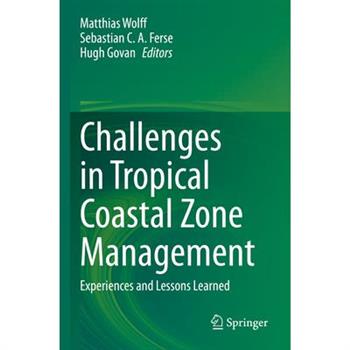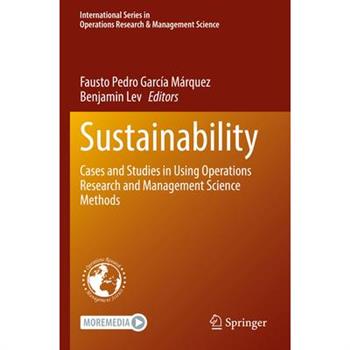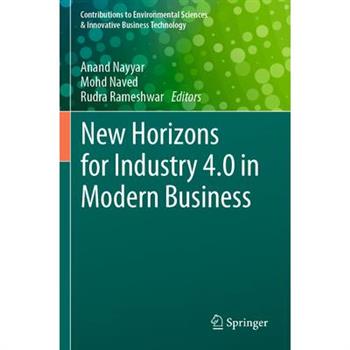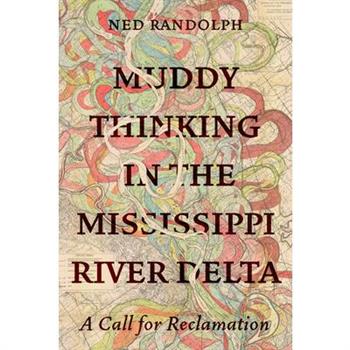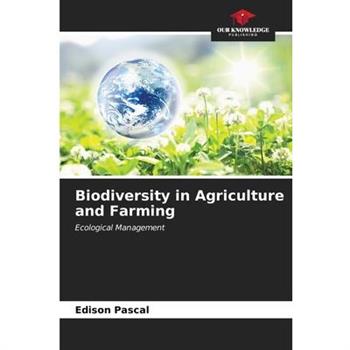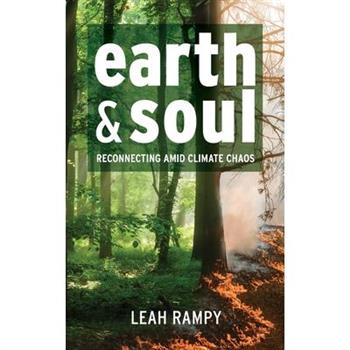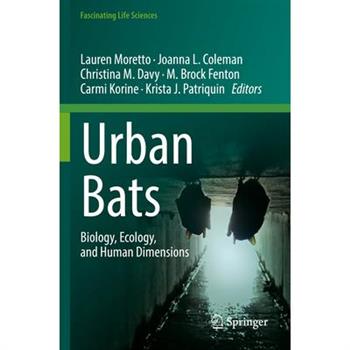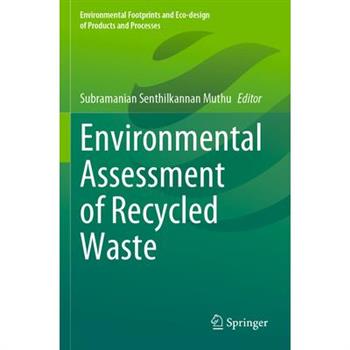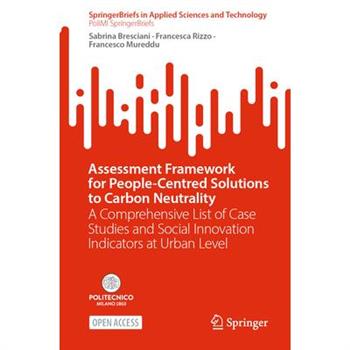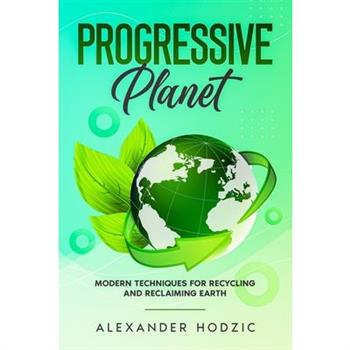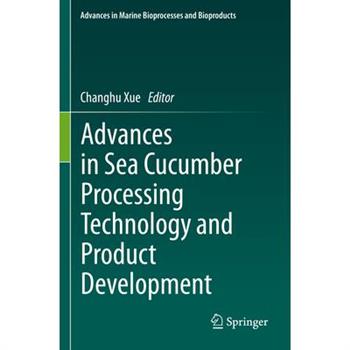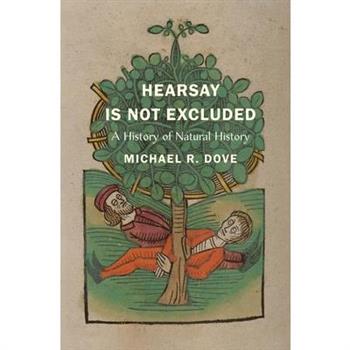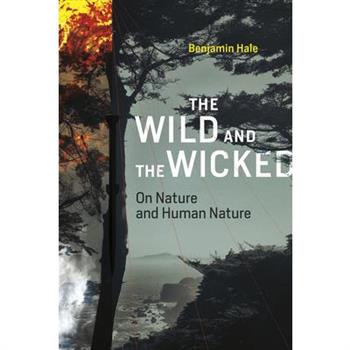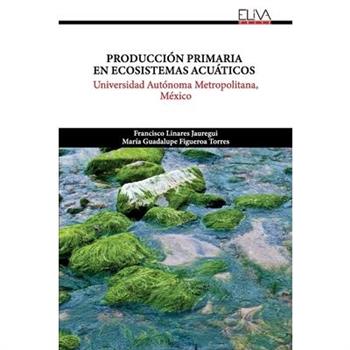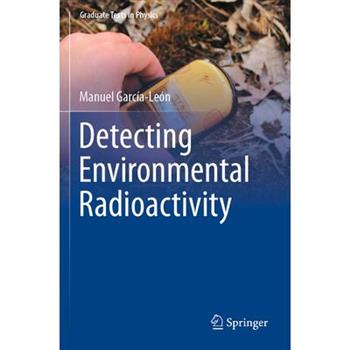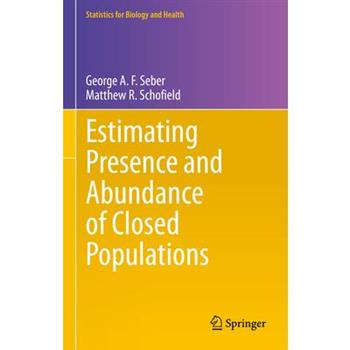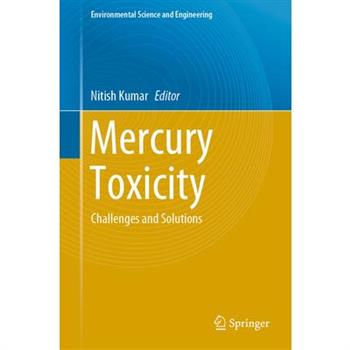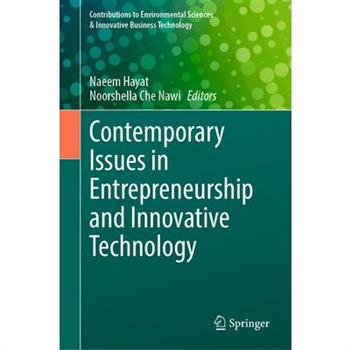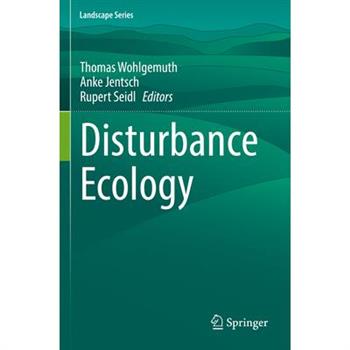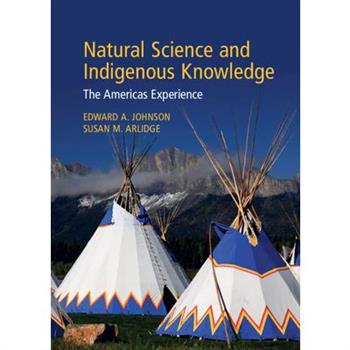Challenges in Tropical Coastal Zone Management
This book focuses on tropical coasts, which are highly vulnerable due to a multitude of stressors. Population growth is substantial, habitats are lost and biodiversity is reduced at an alarming rate, severely affecting many ecosystem services. This situation calls for sound coastal management and the effective engagement of all relevant stakeholders. About two decades ago the M.Sc. program ISATEC (International Studies in Aquatic Tropical Ecology) was created at Bremen University (Germany) to train young scientists for a professional engagement in the complex field of tropical coastal and resource management. This book provides a platform for those Alumni to report on their work experiences and findings in their home countries and covers all regions of the tropical belt. Part I of the book provides a short review of the state of the tropical ocean and its resources and of international attempts towards sustainable ocean management starting with the Rio Declaration onEnvironment and Development in 1992. Part II deals with country case studies, and part III focuses on an evaluation & synopsis of those contributions. Emerging key issues for management and conservation of the tropical coastal environments are presented and critical challenges on the path towards reaching the Sustainable Development Goals (SDGs) are discussed, as are the needs for enhancing research and capacity development.
Globalization, Urbanization, and Sustainability
Globalization, Urbanization, and Sustainability: What Can We Do? provides students with an introduction to the multifaceted nature of civilization and its impact on our environment. The text explores the intricate interplay between globalization, urbanization, and sustainability, and examines the environmental and health impacts of modern society, including climate change, resource consumption, and waste. The book's nine chapters focus on a distinct aspect of globalization, urbanization, and sustainability, including historical perspectives on urbanism and trade, economic fundamentals of global capitalism, world financial and trade institutions, demography, poverty and economic development, public health, and steps individuals can take to preserve our world and act as good stewards of the earth. Designed to foster a critical awareness of the costs associated with modern systems of production and inspire sustainable solutions, Globalization, Urbanization, and Sustainability is an exceptional resource for courses and programs in environmental studies, urban planning, international studies, economics, public health and sustainability.
Sustainability
This book provides relevant theoretical frameworks and the latest empirical research findings in Operations Research (OR) and Management Science (MS) as applied to sustainability. Its goal is to identify and describe ways in which OR and MS have been applied to and influenced the development of sustainability. Many of the issues we face today stem from the interconnectivity of the economy, society, and the environment, and from how both the economy and society are affecting the environment. In response, there have been a range of local and global efforts to advance society without harming the natural environment. The book showcases how OR/MS can help to address these issues, specifically with regard to renewable energy, smart industry, smart cities, transportation, smart homes and devices, etc. This book is intended for professionals in the fields of energy, engineering, information science, mathematics and economics, and for researchers who wish to develop new skills in connection with sustainability, or whose work involves sustainability.
New Horizons for Industry 4.0 in Modern Business
This book discovers what it will take to reindustrialize the previous industrial powerhouses in order to offset the advantages of cheap labor suppliers dominating the industrial sector by exploring the current situation of the production, processing, and manufacturing industries. The Internet of Things (IoT), Big Data, Cyber-Physical Systems (CPS), and Cloud Computing, Cyber Security, Cobotics, Automation, AI, 3D Printing and Additive Manufacturing, SDN, Blockchain technologies are outlined in this unique and comprehensive book, which has true potential for professionals, researchers, policymakers, and book users. New Horizons for Industry 4.0 in Modern Business encompass trends in business and technology globally that may completely alter how manufacturing and production are conducted. What you will discover: Learn about the Industrial Internet of Things and the Industrial Internet. Learn about the technologies that must develop to support Industry 4.0 and what is being done right now to make that happen. In this book, the topic of Industry 4.0 is covered in detail, and it even moves on to concepts of Digital Twins to boost output and create Industrial Internet of Things. With the development of new digital industrial technology, or "Industry 4.0," it is now feasible to collect and analyze data from many machines, resulting in processes that are quicker, more adaptable, and more efficient, producing things of higher quality while spending less money. The manufacturing revolution will boost productivity, alter economics, promote industrial development, and alter workforce demographics, ultimately altering the competitiveness of businesses and areas. Although advanced digital technology is being employed in manufacturing, Industry 4.0 will completely change how things are done. Greater production efficiencies will result, and conventional connections between suppliers, manufacturers, and consumers--as well as between people and machines--will shift.Industry 4.0 is changing the business process. This disruptive technology is radically changing the way businesses/manufacturing is conducted. It will give machines that little bit of intuition with the help of robotics, 3D printing, artificial intelligence, augmented reality, and virtual reality--that will help them do mindless and repetitive jobs without human intervention, allowing humans to focus more on their core competencies.
Muddy Thinking in the Mississippi River Delta
A free ebook version of this title is available through Luminos, University of California Press's Open Access publishing program. Visit www.luminosoa.org to learn more.Muddy Thinking in the Mississippi River Delta uses the story of mud to answer a deceptively simple question: How can a place uniquely vulnerable to sea level rise be one of the nation's most promiscuous producers and consumers of fossil fuels? Organized around New Orleans and South Louisiana as a case study, this book examines how the unruly Mississippi River and its muddy delta shaped the people, culture, and governance of the region. It proposes a framework of "muddy thinking" to gum the wheels of extractive capitalism and pollution that have brought us to the precipice of planetary collapse. Muddy Thinking calls upon our dirty, shared histories to address urgent questions of mutual survival and care in a rapidly changing world.
Biodiversity in Agriculture and Farming
Traditional agricultural activities have been developed without taking into account the conservation of the environment and biodiversity, therefore, it is necessary in rural agro-productive sectors to carry out an ecological territorial planning that benefits the community and the existing biodiversity in the sector, carrying out sustainable and environmentally friendly productive activities. The objective of this research was to identify the biodiversity associated with an agro-productive rural settlement, in order to make a proposal for ecological management.
Earth and Soul
Facing directly into the devastation of climate chaos and biodiversity loss, Rampy leads her readers on a soul journey through grief and loss to also claim the beauty, joy and possibilities available when we reconnect with Earth. As we follow the author's compelling personal experiences and engagingly lyrical stories of whales, cedars, sparrows, and more, we see the necessity and urgency of learning from the wisdom of our kin in the natural world. Writing at the intersection of spirituality, ecology, and story, Rampy charts a course for living deeply connected to Earth in ways that are both vitally important for and uniquely suited to these times. Even now when the world as we once knew it is ending and a new story lies beyond what we can envision, we hold the potential to lay stepping stones toward a diverse and vibrant world of oneness and mutual flourishing.
Population Ecology of Small Mammals
In the monograph at present, the study of small mammal populations in the ecosystem, as well as insufficient attention paid to such species from a scientific point of view, requires in-depth study as an indicator in the study of the state of the environment, not only in Uzbekistan, but in all developed countries. It is known that small mammals actively participate in the food chain in nature and have their own place. Proceeding from this, the monograph is built on the use of modern ecological methods and publication of results in leading scientific publications, discussion and confirmation by leading specialists in the study of ecological features of the population of small mammals of forest ecosystem. Statistical processing of data is carried out using a set of practical statistical programs and standard methods, as well as presented the results of research conducted on substantiation.The book is addressed to scientists, teachers of higher educational institutions, doctoral students, master's students, undergraduate students, as well as interested in the problem of the Aral ecological crisis and issues of solving the ecological consequences on the biota of the Aral Sea region.
Humanity The Final Century
In October, 2023, 16,000 scientists from 163 countries signed a warning to humanity that global climate change, ocean acidification, a collapse of human society, and the extinction of species are increasingly possible. This century. That is: If humanity as a whole doesn't quickly get involved in working to restore wildlife habitat, protect Nature, and live more sustainably. If not, humanity faces: The complete collapse of society, including the end of the monetary, food, energy, water, sanitation, emergency, medical, transportation, communication, industrial, and government systems and services, the meltdown of hundreds of nuclear power plants, and the end of humanity. This century. Professor Lesley Hughes, board member of the Climate Change Authority, and an emeritus professor at Macquarie University recently said: "I don't know how many warnings the world needs. It's as if the human race has received a terminal medical diagnosis, and knows there is a cure, but has consciously decided not to save itself." In his book "Humanity: The Final Century," Daniel John Carey uses quotations from scientists, studies, and reports from around the world mixed with his own commentary in a documentary style of writing to explain the state of Earth, Nature, wildlife, and humanity, and how all of it can soon end as we know it, and that this century might be the end of human history. Carey reasons that humanity needs an intervention for its addiction to destroying Nature and Earth. With this book, he encourages the conversations and actions needed for the solutions to take place. How humans have been living is causing global ecocide and the mass destruction of Nature. If it continues, all evidence points to it causing the extinction of such a wide variety of species within coming decades, and temperatures so high with rising oceans and the instability of so much land that humanity will not survive. There are currently over 42,000 known species of plants and animals threatened with extinction. The planet once again had the hottest temperatures and the most number of forest fires and extreme floods that humans have ever experienced. Record-breaking floods, droughts, temperatures, crop loss, and desertification are accelerating. So are soil loss, pollution, ocean acidification, deep ocean heat, the melting of the ice caps and ocean ice, and the loss of permafrost. "As scientists, we are increasingly being asked to tell the public the truth about the crisis we face in simple and direct terms. The truth is that we are shocked by the ferocity of the extreme weather events in 2023. We are afraid of the uncharted territory we have now entered."- William Ripple, ecologist, Oregon State University Currently, everything from the largest to the smallest forms of life are decreasing in numbers. For instance, in recent decades the populations of both birds and insects have been decreasing by at least two-percent per year. Humans cannot live without insects or birds, and other pollinating animals. It is only one example of the dire situation we are in. It is already impacting all of humanity. At what point will humanity change, and become the solution to the global degradation of the water, land, atmosphere, plants, and animals that humans depend on for life? Or, will it all soon end?
Urban Bats
The Anthropocene is the "age of human influence", an epoch well known for its urban impact. More than half of all people already live in cities, and this proportion is expected to rise to almost 70 percent by 2050. Like other species in urban areas, bats must contend with the pressures of profound and irreversible land cover change and overcome certain unique challenges, such as the high density of roads, lights, glass, and free-ranging domestic animals. Research on urban bats in recent decades indicates that when it comes to urban life, some bats are synanthropes. In other words, although most species of bats are negatively impacted by urbanisation, many appear to not only succeed, but also thrive in cities and towns. This observation has inspired interesting questions about bats in relation to urbanisation. Which traits and behaviours equip bats for urban success? What features of urban areas increase the likelihood that bats will successfully persist there or even colonize newareas? And how does the success of urban bats affect co-habiting humans?Our book explores the interactions between bats and urban environments through case studies and reviews. Understanding how different species interact with urban environments can reveal potential opportunities to mitigate urban threats to bats and threats posed by bats to other urban organisms, including humans. With this book, we thus aspire to provide a knowledge base to help guide current and future efforts to conserve bats.
Environmental Assessment of Recycled Waste
This book with its six interesting chapters highlights the environmental assessment of recycled waste. Waste Management is one of the main topics of concern for an organization and a nation. Out of different destinations at the end of life for a product, Recycling is the need of the hour and is an inevitable destination. Literally all wastes (be it- postindustrial or post-consumer states) if they cannot be reused, have to be recycled. Recycled products are in demand today and we are seeing many recycled alternatives for almost all industrial sectors. One of the million-dollar question to answer in terms of recycling and recycled products is- whether the recycled products are environmentally sustainable than the virgin alternatives? It is highly imperative to ascertain the environmental footprints of recycled products and recycling processes and also find out the best possible ways to further improve the environmental benefits of such recycled products and recycling processes.
A Very Convenient Warming
By nearly every metric, Earth's ecosystems are thriving and the human condition is improving. This notion of a prospering planet is entirely contrary to the claims of a climate crisis and a looming disaster around every corner, as proclaimed by the Climate Industrial Complex. In this book, we explore these benefits and learn that we are feeding the planet's growing population through expanded crop growth, that modest warming is saving lives and that extreme weather events are in decline. Sleep well. There is no climate crisis.
Oceaning
Drones are revolutionizing ocean conservation. By flying closer and seeing more, drones enhance intimate contact between ocean scientists and activists and marine life. In the process, new dependencies between nature, technology, and humans emerge, and a paradox becomes apparent: Can we have a wild ocean whose survival is reliant upon technology? In Oceaning, Adam Fish answers this question through eight stories of piloting drones to stop the killing of porpoises, sharks, and seabirds and to check the vitality of whales, seals, turtles, and coral reefs. Drone conservation is not the end of nature. Instead, drone conservation results in an ocean whose flourishing both depends upon and escapes the control of technologies. Faulty technology, oceanic and atmospheric turbulence, political corruption, and the inadequacies of basic science serve to foil governance over nature. Fish contends that what emerges is an ocean/culture--a flourishing ocean that is distinct from but exists alongside humanity.
Assessment Framework for People-Centred Solutions to Carbon Neutrality
This open access book presents a catalogue of over one thousand indicators which can be used by cities' public administrators to monitor and evaluate social innovation action plans to support people-centred, collaborative or co-designed solutions to lower carbon emissions. Indicators are clustered according to a framework of social innovation solutions for climate neutrality at city level, developed by merging top-down academic knowledge with bottom-up pragmatic case studies. There is currently limited guidance on how to embed social innovations in their cities' action plans with the aim of reaching climate neutrality, and on how to assess the progress and impacts of such people-centred projects in cities. The book addresses this gap and is thus relevant for scholars in the field of policy-making and design, as well as cities' transition teams, policymakers and consultants. Based on the work developed within the EU-funded project NetZeroCities, intervention logics are provided for each of the ten categories of action, with related indicators clustered by category and evaluation criteria (effectiveness, efficiency, relevance, replicability, and scalability). Guidelines to implement the framework support city administrators in defining steps they need to follow to apply the indicators to their local case, making social innovation a crucial lever for accelerating systemic transformation.
Advances in Dye Degradation
This series provides information on the nature of dyes, their harmful effects, and dye degrading techniques. The first volume of this series presents a fundamental concept of dye degradation. The information on target-oriented dye mitigation is intended to give readers a better understanding of the dye degradation process to sustain a healthy environment. Chapters present referenced information and highlight novel breakthroughs in the industry. Key topics: -Foundations of Dye Knowledge: -Evaluating Toxicity-Nanotechnology-Electrochemistry-Catalytic Materials and Photocatalysis-Microbial Biodegradation This book serves as a foundational resource for researchers and students in chemistry and chemical engineering courses. It also serves as a reference for industry professionals who work with chemical dyes (for example in textile and plastic industries) and are engaged in the critical field of environmental remediation.
Progressive Planet
Revolutionize the Way You View Our Planet: Discover Revolutionary Techniques for Recycling and Reclaiming EarthEmbark on a groundbreaking journey through "Progressive Planet: Modern Techniques for Recycling and Reclaiming Earth", a comprehensive guide on modern, sustainable living. This book dives deep into our current environmental predicament and presents an enlightening approach to rediscover how our actions can significantly influence the future of our planet.Topically, this savvy guide starts by painting a vivid picture of the state of our planet. You'll learn about the symptoms of climate change and the realities of biodiversity loss. Combating climate change starts by acknowledging its existence and understanding its implications, which is where this book steps in as vital reading.Unravel the complexities of our waste problem as you delve into Chapter 2. Further your understanding of not only the obvious waste culprits but also the hidden ones, such as food waste. Clarifying the link between waste overload and environmental degradation, it proposes a paradigm shift from a linear to a circular economy. This illuminates the essence of recycling and its invaluable role in the circular economy.Immerse yourself in newfound understandings of recycling in Chapter 4, highlighting the limitations of traditional methods and the emergence of innovative techniques. You will learn about advanced plastic recycling technology, industrial composting, and e-waste recycling, providing you with the information you need to be an eco-conscious consumer.In Chapter 6, grasp the significance of individual responsibility, while offering practical tips on making small changes that can collectively spell a big difference. By promoting reusing, repurposing, and conscious consumerism, this chapter reinforces the importance of individual contributions towards a sustainable future."Progressive Planet" goes beyond just recycling, introducing the concept of giving new life to used materials, and delving into upcycling, repurposing, and urban mining. It also discusses restoration of natural habitats, support for renewable energy sources, and the principles of organic and regenerative agriculture.The final chapters propose actionable steps, from reviewing government policies to companies making a notable difference, and activism. Ending with a hopeful vision of the planet's future, this book empowers you to carve a path towards a sustainable and resilient earth."Progressive Planet: Modern Techniques for Recycling and Reclaiming Earth" is more than just a book; it's a call to action. Our planet needs us - let's respond with knowledge, consciousness, and care.
Hearsay Is Not Excluded
This chronicle of natural history argues that the modern environmental crisis and rise in science skepticism codeveloped with the historic distancing of scientific knowledge from folk knowledge For millennia, the field of natural history promoted a knowledgeable and unifying view of the world. In contrast, the modern rise of narrow scientific disciplines has promoted a dichotomy between nature and culture on the one hand and between scientific and folk knowledge on the other. Drawing on the fields of anthropology, history, and environmental science, Michael R. Dove argues that the loss of this historic holistic vision of the world is partly to blame for contemporary environmental degradation and science skepticism. Dove bases this thesis on a study of four pioneering natural historians across four centuries: Georg Eberhard Rumphius (seventeenth century), Carl Linnaeus (eighteenth century), Alfred Russel Wallace (nineteenth century), and Harold C. Conklin (twentieth century). Dove studies their field craft and writing; the political, cultural, and environmental circumstances in which they worked; the sources of their insight; and the implications of their work for modern society. Most of all, the book seeks to discover what enabled those natural historians to straddle boundaries that today seem impassable and to distill that wisdom for a modern world greatly in need of a holistic vision of people and environment.
The Wild and the Wicked
A brief foray into a moral thicket, exploring why we should protect nature despite tsunamis, malaria, bird flu, cancer, killer asteroids, and tofu. Most of us think that in order to be environmentalists, we have to love nature. Essentially, we should be tree huggers--embracing majestic redwoods, mighty oaks, graceful birches, etc. We ought to eat granola, drive hybrids, cook tofu, and write our appointments in Sierra Club calendars. Nature's splendor, in other words, justifies our protection of it. But, asks Benjamin Hale in this provocative book, what about tsunamis, earthquakes, cancer, bird flu, killer asteroids? They are nature, too. For years, environmentalists have insisted that nature is fundamentally good. In The Wild and the Wicked, Benjamin Hale adopts the opposite position--that much of the time nature can be bad--in order to show that even if nature is cruel, we still need to be environmentally conscientious. Hale argues that environmentalists needn't feel compelled to defend the value of nature, or even to adopt the attitudes of tree-hugging nature lovers. We can acknowledge nature's indifference and periodic hostility. Deftly weaving anecdote and philosophy, he shows that we don't need to love nature to be green. What really ought to be driving our environmentalism is our humanity, not nature's value. Hale argues that our unique burden as human beings is that we can act for reasons, good or bad. He claims that we should be environmentalists because environmentalism is right, because we humans have the capacity to be better than nature. As humans, we fail to live up to our moral potential if we act as brutally as nature. Hale argues that despite nature's indifference to the plight of humanity, humanity cannot be indifferent to the plight of nature.
The Science of Weather
Every time you go outside, you experience the weather. It may be good, it may be bad, and it may be so bad that it ruins all your plans for the day. Have you ever wondered why the weather changes? Why are the changes sometimes expected and sometimes completely unexpected? Why is the weather forecast on the TV, radio or internet sometimes right and sometimes wrong? Is it possible that the forecast is correct but we don't know how to read it? Can you predict the weather correctly yourself? You will find the answers in this book. This book is full of exciting facts about the weather and climates in different parts of the world, with some incredible examples of weather records and extreme weather events. You will learn how the earth's climate has changed over millions of years, with ice ages following warm periods. How do we know if the global warming today is natural or man-made? THis book is also about people. You will read about the lives of some great people who observed the weather, recorded it, and learned to predict it. They studied clouds and winds, they invented measuring instruments, they sailed to new unwelcoming lands to build weather stations there, they learned to use mathematics to predict weather. Through the lives of those people, you will follow the path the science called meteorology has made from ancient Mayan's' predictions to modern AI-created forecasts. You will find out how this science not only informs us but also saves lives. Finally, you will take a look into the future. Will future technology allow people to make perfect forecasts that can never be wrong?
Trust and Credit in Organizations and Institutions
This book shows that evolutionary game theory can unravel how mutual cooperation, trust, and credit in a group emerge in organizations and institutions. Some organizations and institutions, such as insurance unions, credit unions, and banks, originated from very simple mutual-aid groups. Members in these early-stage mutual-aid groups help each other, making rules to promote cooperation, and suppressing free riders. Then, they come to "trust" not only each other but also the group they belong to, itself. The division of labor occurs when the society comes to have diversity and complexity in a larger group, and the division of labor also requires mutual cooperation and trust among different social roles. In a larger group, people cannot directly interact with each other, and the reputation of unknown people helps other decide who is a trustworthy person. However, if gossip spreads untruths about a reputation, trust and cooperation are destroyed.Therefore, how to suppress untrue gossip is also important for trust and cooperation in a larger group. If trustworthiness and credibility can be established, these groups are successfully sustainable. Some develop and evolve and then mature into larger organizations and institutions. Finally, these organizations and institutions become what they are now. Therefore, not only cooperation but also trust and credit are keys to understanding these organizations and institutions.The evolution of cooperation, a topic of research in evolutionary ecology and evolutionary game theory, can be applied to understanding how to make institutions and organizations sustainable, trustworthy, and credible. It provides us with the idea that evolutionary game theory is a good mathematical tool to analyze trust and credit. This kind of research can be applied to current hot topics such as microfinance and the sustainable use of ecosystems.
The Changing Wealth of Nations 2021
Wealth, measured comprehensively to include all assets (produced, human, and natural capital) underpins national income, and sustained growth over the long term requires investment in this broad portfolio of assets. Changing Wealth of Nations 2020 firmly establishes wealth as a measure of sustainability and key component of country analytics by i) expanding the coverage and improving the quality of all assets, notably natural capital, and ii) demonstrating how wealth accounts can be applied in analytics to areas of major policy concern like climate change and natural resource policy reform.
Producci籀n Primaria en Ecosistemas Acu獺ticos
Este trabajo presenta los principales conceptos empledos en el entendimiento de la producci籀n primaria de organismos acu獺ticos fotosintetizadores, as穩 como de los procesos externos e internos a los organismos asociados a la fotos穩nteis tales como la termodin獺mica ( fen籀meons biolelectricos y luminiscentes) y metabolismo (fotoss穩ntesis, fotorespiraci籀n, quimios穩ntesis). Por otra parte se aboran los m矇todos para evaluar la producci籀n y la productividad primaria del fitoplancton, fitobentos, macroalgas y pastos marinos. Al hablar de los productores primarios separte de la necesidad de revisar cuales son los factores que influye, n tanto positiva como negativamente, en sus procesos metab籀licos a diferentes escalas micro, meso y mactoambientales y en diferentes tipos de ecosistemas. Otros elementos importantes de este trabajo consisten en la revsi籀n y propuestas de uso y manejo de los productores primarios como recursos naturales, as穩 como mecanisos para su conservaci籀n. Por 繳ltimo se plantean retos y perspectivas en e amnejo sustentable de estos organismos.
Mine Water Treatment - Active and Passive Methods
This book accompanies you on a journey that starts with the basics of mine water treatment and takes you further through correct sampling for planning to active and passive systems. In the respective chapters you will learn the most important techniques about the parameters to be measured (e.g. on-site parameters, flow rate), which methods are available to actively treat your mine water (e.g. high density sludge method, reverse osmosis, ion exchange) and which ones to perform passive treatment (e.g. constructed wetlands, vertical flow reactor, limestone channel). You will also get an insight into the use of mine water. Don't expect a cookbook - rather, it's an ingredients and utensils list to help you find the right recipe. For extended help on this, check out the more than 1000 references on all the techniques presented. I wrote this book for hydrogeologists, engineers, graduate students, government officials, miners, geoecologists, chemical engineers - in the broadest sense: you.This book is a translation of an original German edition. The translation was done with the help of artificial intelligence (machine translation by the service DeepL.com). A subsequent human revision and a thorough copy editing and update by the author ensured that the contents are correctly represented.
The Nature-Study Idea
In The Nature-Study Idea, Liberty Hyde Bailey articulated the essence of a social movement, led by ordinary public-school teachers, that lifted education out of the classroom and placed it into firsthand contact with the natural world. The aim was simple but revolutionary: sympathy with nature to increase the joy of living and foster stewardship of the earth.With this definitive edition, John Linstrom reintroduces The Nature-Study Idea as an environmental classic for our time. It provides historical context through a wealth of related writings, and introductory essays relate Bailey's vision to current work in education and the intersection of climate change and culture. In this period of planetary turmoil, Bailey's ambition to cultivate wonder (in adults as well as children) and lead readers back into the natural world is more important than ever.
Waste Treatment in the Biotechnology, Agricultural and Food Industries
This book and its sister book (Volume 1 ) of the Handbook of Environmental Engineering (HEE) series have been designed to serve as a mini-series covering waste treatment in biotechnology, agricultural and food industries . It is expected to be of value to advanced undergraduate and graduate students, to designers of sustainable biological resources systems, and to scientists and researchers. The aim of these books is to provide information on bio-environmental engineering, and to serve as a basis for advanced study or specialized investigation of the theory and analysis of various agricultural and natural resources systems. Volume 2 covers topics on: (a) application of secondary flotation-filtration and coagulant recycle for improvement of a pulp mill primary waste treatment facility; (b) management of solid and hazardous wastes; (c) microbial enzymes for wastewater treatment; (d) a multi-criteria approach to appropriate treatment technology selection for water reclamation; (e) chemicals used in agriculture: hazards and associated toxicity issues; (f) biochar for adsorptive removal of pharmaceuticals from environmental water; (g) treatment of palm oil mill effluent; (h) treatment and management of solid waste by incineration; (i) technologies for removal of volatile organic compounds (VOC) from industrial effluents and/or potable water sources; (j) treatment of healthcare waste.
The Nature-Study Idea
In The Nature-Study Idea, Liberty Hyde Bailey articulated the essence of a social movement, led by ordinary public-school teachers, that lifted education out of the classroom and placed it into firsthand contact with the natural world. The aim was simple but revolutionary: sympathy with nature to increase the joy of living and foster stewardship of the earth.With this definitive edition, John Linstrom reintroduces The Nature-Study Idea as an environmental classic for our time. It provides historical context through a wealth of related writings, and introductory essays relate Bailey's vision to current work in education and the intersection of climate change and culture. In this period of planetary turmoil, Bailey's ambition to cultivate wonder (in adults as well as children) and lead readers back into the natural world is more important than ever.
Detecting Environmental Radioactivity
This textbook presents the principles and methods for the measurement of radioactivity in the environment. In this regard, specific low-level radiation counting and spectrometry or mass spectrometry techniques are discussed, including sources, distribution, levels and dynamics of radioactivity in nature. The author gives an accurate description of the fundamental concepts and laws of radioactivity as well as the different types of detectors and mass spectrometers needed for detection. Special attention is paid to scintillators, semiconductor detectors, and gas ionization detectors. In order to explain radiochemistry, some concepts about chemical separations are introduced as well. The book is meant for graduate and advanced undergraduate students in physics, chemistry or engineering oriented to environmental sciences, and to other disciplines where monitoring of the environment and its management is of great interest.
Estimating Presence and Abundance of Closed Populations
This comprehensive book covers a wide variety of methods for estimating the sizes and related parameters of closed populations. With the effect of climate change, and human territory invasion, we have seen huge species losses and a major biodiversity decline. Populations include plants, trees, various land and sea animals, and some human populations. With such a diversity of populations, an extensive variety of different methods are described with the collection of different types of data. For example, we have count data from plot sampling, which can also allow for incomplete detection. There is a large chapter on occupancy methods where a major interest is determining whether a particular species is present or not. Citizen and opportunistic survey data can also be incorporated. A related topic is species methods, where species richness and species' interactions are of interest. A variety of distance methods are discussed. One can use distances from points and lines, as wellas nearest neighbor distances. The applications are extensive, and include marine, acoustic, and aerial surveys, using multiple observers or detection devices. Line intercept measurements have a role to play such as, for example, estimating parameters relating to plant coverage. An increasingly important class of removal methods considers successive "removals" from a population, with physical removal or "removal" by capture-recapture of marked individuals. With the change-in-ratio method, removals are taken from two or more classes, e.g., males and females. Effort data used for removals can also be used. A very important method for estimating abundance is the use of capture-recapture data collected discretely or continuously and can be analysed using both frequency and Bayesian methods. Computational aspects of fitting Bayesian models are described. A related topic of growing interest is the use of spatial and camera methods. With the plethora of models there has been a corresponding development of various computational methods and packages, which are often mentioned throughout. Covariate data is being used more frequently, which can reduce the number of unknown parameters by using logistic and loglinear models. An important computational aspect is that of model selection methods. The book provides a useful list of over 1400 references.
Ecosystem and Species Adaptations in the Andean-Amazonian Region
This book focuses on ecosystems and species adaptations in the unique Peruvian Andean-Amazonian region. The presence of the Andes as the backbone is the cause of the huge ecosystem diversity and biodiversity of species that characterize the Andean-Amazonian ecosystems. The complex orography of Peru as results of the Andes presence in its tropical setting favors the occurrence of local climatic features that provide diverse environmental conditions for multiple, unique plant and animal species, many of them endemic to the Andes. The book will introduce the reader to the climatic history and geography of the Peruvian Andes and the Peruvian Natural Areas Protection system focusing on the Manu and Northwest biosphere reserves given their relevant ecological importance as well as the relationship between them and the local population. Important global topics like urbanization, deglaciation and global warming will be analyzed and discussed due to their impact in the Andes-Amazon ecosystems. Finally, the traditional land-use systems, agrobiodiversity and agrodiversity in Peru are present and linked with the climate change adaptations.
Geospatial Analytics for Environmental Pollution Modeling
This book aims to provide a comprehensive study on various aspects of environmental pollution dynamics using geospatial technology and modeling techniques. The utility of geospatial technology will be demonstrated for the effective study of environmental pollution, as space and location are very important for effective environmental health surveillance. The timeliness of the work is due to the increasing relevance of geospatial technology applications in environmental health investigations. Moreover, different types of pollution are covered in detail, including air and soil, all of which are analyzed using latest Remote Sensing and GIS technology. The basics of environmental pollution and its impacts are covered in the book's first part, while the second part focuses on the use of geospatial technology in investigating and modeling various instances of environmental pollution. The third part discusses policy measures for mitigating environmental pollution hazards, using geospatial analyses and data to craft informed policy decisions. The primary audience for the book is researchers working in the field of environmental pollution with incorporation of geospatial technology, including upper-level undergraduate and graduate students taking courses in remote sensing and its environmental applications. The secondary audience is academicians, planners, environmentalists and policymakers working in the field of environment protection and management.
Biochar Application in Soil to Immobilize Heavy Metals
Biochar Application in Soil to Immobilize Heavy Metals: Fundamentals and Case Studies covers biochar's application to soil heavy metal immobilization. The book covers biochar's effect on soil micro-and macro-properties, assessment of heavy metal stability in biochar-treated soil, and long-term stability of heavy metals in biochar-treated soil. A notable feature of this book includes its extensive use of case studies. Chapters focus on small-scale field trials and medium to large-scale industrial applications of biochar to immobilize soil heavy metals. In addition, the flow of the whole book follows "mechanisms-to-applications-to-case studies," allowing readers to translate the fundamentals to practical applications. This book provides soil and environmental scientists with the tools they need to build the links between micro-level surface chemistry and macro-level engineering performance.
Consumer Awareness and Textile Sustainability
This contributed volume discusses how consumer awareness of textile sustainability can lead to a more sustainable textile supply chain. From the initial purchase of a textile to its care and longevity, consumer behaviors are at the core of consumption associated with the textile industry. Making consumers aware of the environmental impacts of the clothing products they buy help them to choose the best alternative which has the lowers footprints and also enable them to help the entire textile sector to become sustainable. In addition, making them aware of environmental footprints of textile products from cradle to grave, make them aware of how best they can take care of their products during use and disposal phases and how they can help to preserve the planet with their earnest efforts to reduce the environmental impacts in their boundary, i.e. the use and disposal phases.
Mercury Toxicity
This book presents mercury toxicity with respect to remediation and health issues. It covers sources of mercury contamination, its impact on human health, and prospective remediation by both bioremediation and phytoremediation with the application of recent advanced techniques such as genetic engineering and nanotechnology.Both anthropogenic activities and natural processes cause the release of mercury into different spheres of the environment resulting in severe adverse impacts. Increased anthropogenic discharge of mercury leads to disturbance in its natural biogeochemical cycle, which results in unenviable diseases and hazardous health effects. Mercury pollution is responsible for causing neurobehavioral, kidney, heart, gastrointestinal, liver, and other diseases. Many published works about the impact of mercury on health are also available worldwide; however, there is no complete understanding available on toxicological studies of mercury that covers the broader spectrum of findings ranging from sources of exposure to mercury toxicity to its remediation strategies.This book brings together a diverse group of environmental science, sustainability, and health researchers to address the challenges posed by global mass poisoning caused by mercury contamination. The book also proposes solutions to contamination through multi-disciplinary approaches.The book contains three sections. The first part describes the different sources and distribution of mercury in soil and plant ecosystems. The second part explains the health risks linked to mercury toxicity. The third part addresses sustainable mercury toxicity mitigation strategies and the potential applications of recent technology in providing solutions. This book is a valuable resource to students, academics, researchers, and environmental professionals working in the field of mercury contamination.
Wastewater to Water
This textbook offers a complete comprehensive coverage of wastewater engineering from pollutant classification, design of collection systems and treatment systems including operational guidelines for the treatment plants. Apart from the primary and conventional secondary wastewater treatment, this book covers the details and design of advanced biological treatment systems such as sequencing batch reactor (SBR), up-flow anaerobic sludge blanket (UASB) reactors and hybrid reactor, with design examples and photographs of actual working reactors which is useful for students and practicing engineers. This textbook is designed to provide complete solution for the wastewater engineering for easy reference to the users. This textbook is an ideal reference for courses taught at the university undergraduate and postgraduate level in the field of civil/environmental engineering, chemical engineering, water management and environmental science. It should also appeal to practicing engineers in the wastewater engineering and effluent treatment plant designers.
Disturbance Ecology
This edited work presents a multi-faceted view on the causes and consequences of disturbance in ecosystems. Vegetation can be affected by a variety of different disturbances such as wind, floods, fire, and insect attack, leading to an abrupt change in live biomass. Disturbance is a motor of vegetation dynamics, but also sensitive to climate change and poses a challenge for ecosystem management. Readers will discover the global distribution of disturbance regimes and learn about the importance of disturbances for biodiversity and the evolution of plant and animal life. The book provides a Central European perspective on disturbance ecology, and addresses important disturbance agents such as fire, wind, avalanches, tree diseases, insect defoliators, bark beetles and large herbivores in dedicated chapters. It furthermore includes chapters on anthropogenic disturbances in forests and grasslands. The impact of climate change on disturbance regimes and approaches to address disturbance risks in ecosystem management are discussed in concluding chapters. Within the 18 chapters 14 textboxes highlight current topics of disturbance ecology and provide deeper methodological insights into the field. Disturbances strongly shape our landscapes and maintain our biodiversity. A better understanding of their ecology is thus fundamental for contextualizing the dynamic changes in our environment. This book is a valuable resource for students and practitioners interested in disturbances and their management.
The Pfizer Papers
The Pfizer Papers features new reports written by WarRoom/DailyClout research volunteers, which are based on the primary source Pfizer clinical trial documents released under court order and on related medical literature. The book shows in high relief that Pfizer's mRNA COVID-19 vaccine clinical trial was deeply flawed and that the pharmaceutical company knew by November 2020 that its vaccine was neither safe nor effective. The reports detail vaccine-induced harms throughout the human body, including to the reproductive system; show that women suffer vaccine-related adverse events at a 3:1 ratio; expose that vaccine-induced myocarditis is not rare, mild, or transient; and, shockingly, demonstrate that the mRNA vaccines have created a new category of multi-system, multi-organ disease, which is being called "CoVax Disease." Despite the fact that Pfizer committed in its own clinical trial protocol to follow the placebo arm of its trial for twenty-four months, Pfizer vaccinated approximately 95 percent of placebo recipients by March 2021, thus eliminating the trial's control group and making it impossible for comparative safety determinations to be made. Just as importantly, The Pfizer Papers makes it clear that the US Food and Drug Administration knew about the shortfalls of Pfizer's clinical trial as well as the harms caused by the company's mRNA COVID vaccine product, thus highlighting the FDA's abject failure to fulfill its mission to "[protect] the public health by ensuring the safety, efficacy, and security of human and veterinary drugs, biological products, and medical devices." The Pfizer Papers offers an in-depth look at how Big Pharma, the US government, and healthcare entities stand protected behind the broad legal immunity provided by the Public Readiness and Emergency Preparedness Act (PREP Act) when creating, prescribing, and administering vaccines; and, under that shield of protection, do what is best for their bottom lines rather than for the health and well-being of Americans.
The Accidental Ecosystem
One of Smithsonian Magazine's Favorite Books of 2022 With wildlife thriving in cities, we have the opportunity to create vibrant urban ecosystems that serve both people and animals. The Accidental Ecosystem tells the story of how cities across the United States went from having little wildlife to filling, dramatically and unexpectedly, with wild creatures. Today, many of these cities have more large and charismatic wild animals living in them than at any time in at least the past 150 years. Why have so many cities--the most artificial and human-dominated of all Earth's ecosystems--grown rich with wildlife, even as wildlife has declined in most of the rest of the world? And what does this paradox mean for people, wildlife, and nature on our increasingly urban planet? The Accidental Ecosystem is the first book to explain this phenomenon from a deep historical perspective, and its focus includes a broad range of species and cities. Cities covered include New York City, Los Angeles, San Francisco, Pittsburgh, Austin, Miami, Chicago, Seattle, San Diego, Atlanta, Philadelphia, and Baltimore. Digging into the natural history of cities and unpacking our conception of what it means to be wild, this book provides fascinating context for why animals are thriving more in cities than outside of them. Author Peter S. Alagona argues that the proliferation of animals in cities is largely the unintended result of human decisions that were made for reasons having little to do with the wild creatures themselves. Considering what it means to live in diverse, multispecies communities and exploring how human and nonhuman members of communities might thrive together, Alagona goes beyond the tension between those who embrace the surge in urban wildlife and those who think of animals as invasive or as public safety hazards. The Accidental Ecosystem calls on readers to reimagine interspecies coexistence in shared habitats, as well as policies that are based on just, humane, and sustainable approaches.
Climate Fetish
The reader is invited to consume this work of nonfiction with a mind open to the new idea that global environmentalism has devolved into Ecopolitics as a partisan political special interest in the 21st Century. Sadly, consensus science that solves real environmental problems has been replaced with pernicious political propaganda and demagoguery. And, the cost-benefit analyses necessary for prioritizing and solving environmental problems goes unmentioned in the issues of global climate change - unmentioned because such analyses are incalculable in today's knowledge of climate science. This book is a rational synthesis of the massive, and often contradictory, volumes of information on global warming and climate change. This book cites numerous contemporary and credible experts on the issues of climate science and climate policy for a balanced assessment. The Author has dedicated his life to understanding and communicating the complexities, interrelationships, politics, sciences, economics and global significance manifested in environmental matters. Mr. Taylor has authored two prior book: "Green Gone Wrong" and "Climate of Ecopolitics."
Natural Science and Indigenous Knowledge
How do we combine the areas of intersection between science and indigenous knowledge, but without losing the totality of both? This book's objective is to consider how Indigenous populations have lived and managed the landscape. Specifically, how their footprint was a result of the combination of their empirical knowledge and their culture. The chapters are divided into four groups: The first deals with reintegrating cultures and natural landscapes and the role of kinship and oral tradition. The second group approaches the landscape as a living university of learning and managing, discussing the ethnobotany of how to grow more responsibly, and assess and project the harvest. The third group deals with the managing of fire in an anthropogenic plant community and how to integrate indigenous agriculture in hydrology and dry regions. The fourth group consists of studies of how science and indigenous knowledge can be taught in schools using land-based studies.
Silicon Valley and the Environmental Inequalities of High-Tech Urbanism
In the half century after World War II, California's Santa Clara Valley transformed from a rolling landscape of fields and orchards into the nation's most consequential high-tech industrial corridor. How Santa Clara Valley became Silicon Valley and came to embody both the triumphs and the failures of a new vision of the American West is the question Jason A. Heppler explores in this book. A revealing look at the significance of nature in social, cultural, and economic conceptions of place, the book is also a case study on the origins of American environmentalism and debates about urban and suburban sustainability.Between 1950 and 1990, business and community leaders pursued a new vision of the landscape stretching from Palo Alto to San Jose-a vision that melded the bucolic naturalism of orchards, pleasant weather, and green spaces with the metropolitan promise of modern industry, government-funded research, and technology. Heppler describes the success of a new, clean, future-facing economy, coupled with a pleasant, green environment, in drawing people to Silicon Valley. And in this overwhelming success, he also locates the rapidly emerging faults created by competing ideas about forming these idyllic communities-specifically, widespread environmental degradation and increasing social stratification. Cities organized around high-tech industries, suburban growth, and urban expansion were, as Heppler shows, crucibles for empowering elites, worsening human health, and spreading pollution.What do "nature" and "place" mean, and who gets to define these terms? Key to Heppler's work is the idea that these questions reflect and determine what, and who, matters in any conversation about the environment. Silicon Valley and the Environmental Inequalities of High-Tech Urbanism vividly traces that idea through the linked histories of Silicon Valley and environmentalism in the West.
Heating with Wolves, Cooling with Cacti
This book describes the detailed process behind the development of a comprehensive thermo-bio-architectural framework (the ThBA). This framework systematically connects the thermal performance requirements of a building to relevant solutions found in the natural world.
Global Environmental Changes, Desertification and Sustainability
The book considers desertification as a cause-effect of environmental degradation that causes global environmental changes and the current climate crisis. Desertification affects sustainability and is one of the most severe socio-environmental problems on a global, regional, and local scale and in magnitude.It is a complex and interdisciplinary phenomenon with socioeconomic, historical, and ecological aspects. The book dealt with themes such as "Anthropocene and limits of balance on Earth; Global Environmental Changes, Climate Crisis; Desertification: concepts, myths, and reality; Causes and impacts in the world," considering international technical-scientific assumptions guided by historical, practical, and conceptual issues.Currently, desertification (land degradation in arid, semi-arid, and sub-humid regions, resulting from various factors, such as climate variations and human activities) occurs in different continents and associates with land use and environmental and climate changes. This is a question of interest to the political management of the territory.The compendium goes beyond the conceptual approach and brings case studies with depth and a holistic view. Watersheds, for example, were treated as synthesis cells of environmental assessments and territorial units to develop public policies to manage natural resources and mitigate soil salinization and geochemical contamination.Besides the correlation between desertification and climate as a natural design, its harmful consequences for the planet are correlated with the most affected areas associated with poverty, environmental conflicts, and land tenure. The book considers several studies and a wealth of qualitative and quantitative data, pointing out about 3.6 billion hectares affected and more than 2.6 billion people affected worldwide.Desertification areas demand priority attention and greater scientific clarification not contaminated by other interests, surpassing the boundaries of sectorial and empirical explanation and not dissociated from natural x human processes. The book proposes to be holistic with an assessment of the totality!
Sustainable Wildlife Management
Wildlife includes undomesticated native species of animals and plants of a region and all organisms that grow or live wild in an area without being introduced by humans. All game species, both birds and mammals, that are hunted for food and sport are also included. They can be found in all ecosystems and are protected for many reasons. Many national and international organizations, including the World Wildlife Fund, Conservation International, the Wildlife Conservation Society, and the United Nations, are working to support global animal and habitat conservation, working with governments to establish and protect public lands such as national parks and wildlife refuges, helping to draft legislation to protect various species, and working with law enforcement to prosecute wildlife crimes such as trafficking, illegal hunting, and poaching.
Symbiosis in Nature
Symbiosis is a vital and enduring interaction between two species in nature, benefiting both organisms involved. Mutualism, commensalism, and parasitism are the three main types of symbiotic relationships. Mutualism benefits both species, commensalism benefits one species while leaving the other unaffected, and parasitism benefits one species at the expense of the other. These interactions play a crucial role in maintaining ecosystem stability and functionality. Symbiosis relies on a close genetic, physiological, and morphological connection between the participating species. Numerous examples demonstrate the significance of symbiosis in nature. Nitrogen-fixing bacteria, for instance, convert atmospheric nitrogen into ammonia, which plants can utilize as a nutrient. This process reduces the reliance on chemical fertilizers. Arbuscular mycorrhizal fungi enhance nutrient and water absorption in plants, while certain bacteria in the soil improve nutrient availability, plant development, and photosynthesis. These instances highlight the diverse ways in which symbiosis supports the well-being of different species. This book thoroughly explores various aspects of symbiosis in nature, delving into topics such as signaling, its importance in agriculture, and its role in mitigating abiotic stresses. It also provides a comprehensive exploration of various aspects related to symbiosis in nature, offering readers a valuable opportunity to enhance their understanding of this subject. By offering valuable insights, the book sheds light on the beneficial relationships that exist between different species. Overall, symbiosis is an integral mechanism that promotes the interdependence and cooperation of species in nature. Understanding the complexities and benefits of symbiotic relationships is essential for comprehending and preserving the delicate balance within ecosystems.
Sustainable Regional Planning
Sustainable development involves balancing economic growth with current and future needs. Regional sustainable development faces many challenges. Sustainability requires zone-specific indicators. Regional planning is essential for sustainable development because land use, transportation, and energy are interdependent. Europe, especially Scandinavia, could lead sustainable practices due to its progressive government and infrastructure. Data-driven, global efforts are needed for sustainable development. Regional projects test new ideas. Sustainable regional planning requires integrated decision-making, social equity, natural resource protection, and community resilience. It balances economic growth and environmental protection. This book provides a comprehensive overview of sustainable regional planning. It emphasizes sustainability in regional planning and the roles of various actors in promoting sustainable development. Global urbanization requires sustainable urban and regional planning. This book's framework integrates environmental and economic goals, benefiting students and professionals. It reconciles private property rights and public interest in protecting natural and cultural resources in suburban, urban planning. The book includes three sections on "Principles of Sustainable Urban Planning", "Case Studies", and "Challenges and Future Directions". It presents a comprehensive and informed perspective on sustainable regional planning in urban areas. It offers a detailed examination and evaluation of diverse concepts and approaches to contemporary sustainable regional planning and their implications for human livelihoods. Finally, the book explores the relevance of sustainability in modern society, shedding light on the multiple dimensions of this topic and their influence on human well-being.




